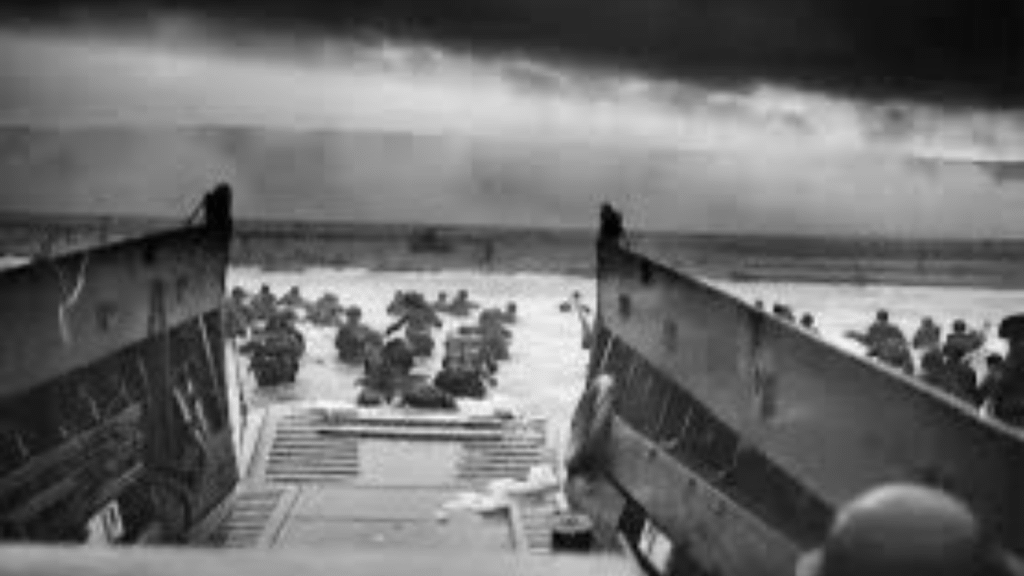D Day, June 6, 1944, marks the largest seaborne invasion in history, when Allied forces landed on Normandy’s beaches to fight Nazi Germany. Known as Operation Overlord, it was a turning point in World War II, leading to the liberation of France. Recently, D Day has been trending on X, especially around its 81st anniversary in 2025, with posts like @kershaw_alex’s reflecting on its historical weight. People share stories of veterans, photos of Normandy, and debates about its impact, keeping the memory alive. This article explores why D Day is trending, its connection to World War II and Normandy, and its lasting legacy.
The Historical Significance of D Day
D Day, June 6, 1944, was the start of Operation Overlord, when over 156,000 Allied troops from the U.S., UK, Canada, and other nations landed on Normandy’s beaches: Utah, Omaha, Gold, Juno, and Sword. It aimed to free Western Europe from Nazi control. Despite heavy losses—around 4,440 Allied deaths—it secured a foothold, leading to France’s liberation by August 1944. Posts on X, like @SatlokChannel’s, highlight its role in defeating Germany. D Day’s scale, with 7,000 ships and 12,000 planes, makes it a symbol of courage and strategy, inspiring ongoing discussions online.
Operation Overlord Explained
Operation Overlord was the codename for the Allied invasion of Normandy, planned for years to open a second front against Nazi Germany. It involved 156,115 troops, 6,939 ships, and 2,395 aircraft, per History.com. The operation targeted five beaches, with paratroopers securing key inland points. Deception tactics, like Operation Fortitude, misled Germans to expect an attack at Pas-de-Calais, not Normandy. This strategic planning ensured success, making D Day a critical World War II victory.
The Role of Normandy
Normandy’s 50-mile coastline was chosen for its flat beaches and proximity to England, ideal for landing troops. The region’s rugged cliffs and German defenses, like the Atlantic Wall, made it tough, but Allies overcame these with coordinated air, sea, and land assaults. By June 30, over 850,000 troops and 148,000 vehicles had landed, per the Eisenhower Library. Normandy became the gateway to liberate France, cementing D Day’s historical importance.
Why D Day Is Trending on X
D Day trends on X, especially around June anniversaries, due to its emotional and historical weight. In 2025, posts like @DrHelenFry’s recall the 81st anniversary, sharing photos and veteran stories. Users like @MilitaryCooI highlight traditions, like French citizens polishing gravestones at Omaha Beach. Discussions also spark debates, with @Dispropoganda noting the Red Army’s role in Germany’s defeat, though this is controversial. The 80th anniversary in 2024, attended by 10,000 people at Normandy American Cemetery, per ABMC, boosted online chatter. These posts keep D Day’s legacy alive, honoring sacrifices and sparking reflection.
Anniversary Commemorations
The 81st anniversary in 2025 drives X posts, with users like @kershaw_alex sharing real-time reflections on June 7. Last year’s 80th anniversary, with leaders like Biden and Macron at Normandy, per ABMC, fueled global attention. People post photos, videos, and veteran stories, like @Combat_learjet’s tribute to his uncle at Utah Beach. These events remind users of D Day’s sacrifices, keeping it trending as a symbol of bravery and unity.
Veteran Stories and Tributes
X users share personal stories, like @Combat_learjet’s about his uncle in the 90th Infantry Division, who survived Utah Beach but died later. Posts honor the 4,414 Allied deaths on D Day, per the Commonwealth War Graves Commission, and fewer than 3,000 remaining veterans in 2021, per @dvesean. Tributes, like French citizens shining gravestones, per @MilitaryCooI, resonate emotionally, driving engagement and keeping D Day trending as users celebrate heroes.
D Day’s Connection to World War II
D Day was a game-changer in World War II, marking the start of Nazi Germany’s defeat in Western Europe. After Germany occupied France in 1940, Allies planned a massive invasion. D Day’s success, despite 4,000-9,000 German casualties and heavy Allied losses, per Britannica, weakened Hitler’s grip. By August 1944, northern France was free, and by May 1945, Germany surrendered. X posts, like @SatlokChannel’s, call it “crucial to Germany’s defeat.” The operation’s scale and bravery make it a focal point of World War II history discussions online.
The Atlantic Wall Challenge
Hitler’s Atlantic Wall, a 2,400-mile defense of bunkers and landmines, guarded Normandy. Led by Erwin Rommel, it aimed to stop Allies, per History.com. On D Day, 156,000 troops faced fierce resistance, especially at Omaha Beach, where 2,500 Americans died, per the CWGC. Allied bombings and deception tactics weakened these defenses, allowing troops to push inland. This battle against the Wall is a key reason D Day is celebrated as a strategic triumph.
Allied Cooperation
D Day saw unprecedented teamwork, with over 2 million troops from 12 countries, including the U.S., UK, Canada, and Poland, per the Imperial War Museums. General Dwight D. Eisenhower led the Supreme Headquarters Allied Expeditionary Force, coordinating air, sea, and land forces. The operation’s success relied on this unity, with 7,000 ships and 23,400 paratroopers, per the National WWII Museum. X posts praise this collaboration, highlighting how diverse nations united to defeat Nazi Germany.
Key Challenges Faced on D Day
D Day was no easy win. Bad weather delayed the invasion from June 5 to June 6, 1944, as Eisenhower needed clear skies and low tides, per CNN. Omaha Beach saw the heaviest losses, with strong currents and German machine guns cutting down troops, per History.com. Paratroopers faced scattered drops, and German defenses, like the Atlantic Wall, were brutal. Despite these, Allies secured beachheads by midnight, per the IWM. X posts, like @kershaw_alex’s, note the fragile beachhead, reflecting on the high stakes and courage.
Weather Delays
Storms forced Eisenhower to postpone D Day from June 5 to June 6, 1944, needing a full moon and low tides for landings, per the IWM. Overcast skies grounded German planes, giving Allies an edge, per Ducksters. This risky call paid off, but rough seas challenged landing craft, especially at Omaha. X users often mention this decision, praising Eisenhower’s bold leadership under tough conditions.
Omaha Beach Struggles
Omaha Beach was the bloodiest, with 2,500 U.S. deaths due to strong currents and heavy German fire, per the CWGC. Landing craft drifted off course, and cliffs made advance tough, per Britannica. Troops pushed through to fortified seawalls by nightfall, per History.com. X posts highlight photos by Robert Capa, capturing the chaos, and honor the bravery of soldiers who faced near-certain death.
Lasting Legacy of D Day
D Day’s legacy lives on as a symbol of sacrifice and victory. It led to France’s liberation and Germany’s defeat in 1945. The Normandy American Cemetery, with 9,386 graves, stands as a tribute, per @MilitaryCooI. Fewer than 3,000 D Day veterans remain, per @dvesean, making their stories precious. Anniversaries, like the 81st in 2025, keep it trending on X, with users sharing tributes and debates. The National D-Day Memorial in Bedford, Virginia, honors the “Bedford Boys,” who lost 19 men, per the D-Day Memorial. D Day reminds us of unity and courage.
Memorials and Cemeteries
The Normandy American Cemetery in Colleville-sur-Mer, with 9,386 graves, is a sacred site, per ABMC. French citizens polish gravestones yearly, per @MilitaryCooI. The National D-Day Memorial in Bedford, Virginia, honors the 4,427 Allied deaths, per the D-Day Memorial. X posts share images of these sites, keeping the memory alive. Visitors, especially Gold Star families, are urged to respect these grounds, per ABMC, ensuring D Day’s sacrifices endure.
Veteran Stories
Fewer than 3,000 D Day veterans were alive in 2021, per @dvesean, making their stories vital. Posts like @Combat_learjet’s share tales of soldiers like Johnnie Likes, who stormed Utah Beach. Oral histories, like those from the National WWII Museum, capture their bravery. X users post about veterans’ return trips to Normandy, supported by charities, per PBS. These stories fuel D Day’s trending status, reminding us of personal sacrifices.
How to Learn More About D Day
To dive deeper, visit the National WWII Museum’s website for videos and oral histories. The Eisenhower Library offers documents like SHAEF messages. Books like Stephen Ambrose’s “D-Day” detail the invasion. X posts, like @SatlokChannel’s, share quick facts, while @DrHelenFry’s photos inspire visits to Normandy. The National D-Day Memorial in Bedford has a research archive for veteran stories. Check History.com or Britannica for stats and maps. These resources keep D Day’s history alive and accessible.
Online Resources
Websites like the National WWII Museum and History.com offer videos, photos, and stats, like 156,115 troops and 4,414 deaths, per the CWGC. The Eisenhower Library has primary sources, like Eisenhower’s D-Day order. X posts, like @kershaw_alex’s, share real-time facts. These platforms make learning easy, with maps and veteran accounts that bring D Day to life for all ages.
Visiting Normandy
Visiting Normandy’s beaches, like Omaha and Utah, or the American Cemetery, offers a powerful experience. The ABMC advises contacting NormandyVisits@abmc.gov for veteran family visits. X posts, like @DrHelenFry’s, share emotional photos from commemorations. Respectful behavior is key—no picnics or drones without permits, per ABMC. These trips connect you to D Day’s history, honoring the sacrifices made.



